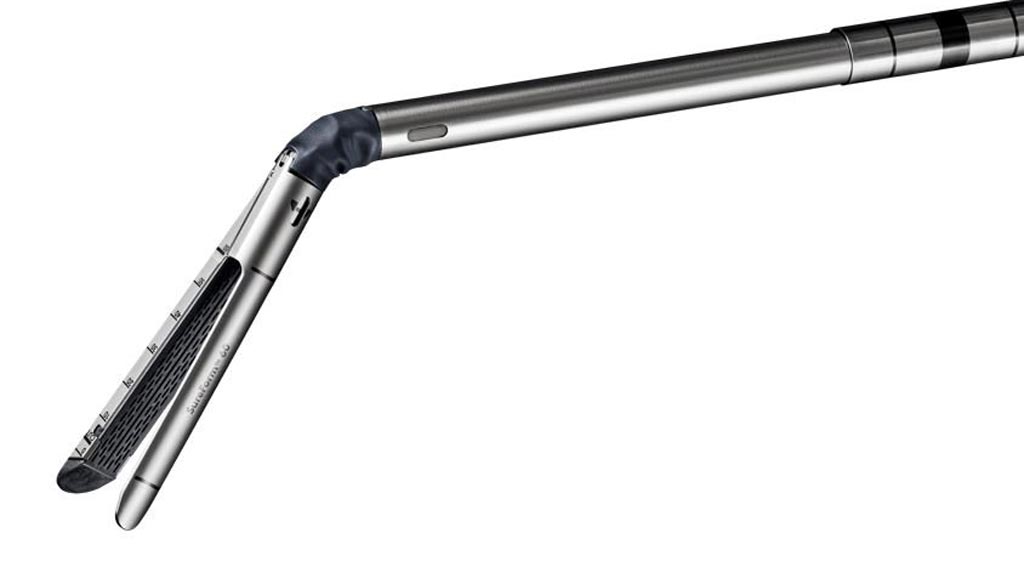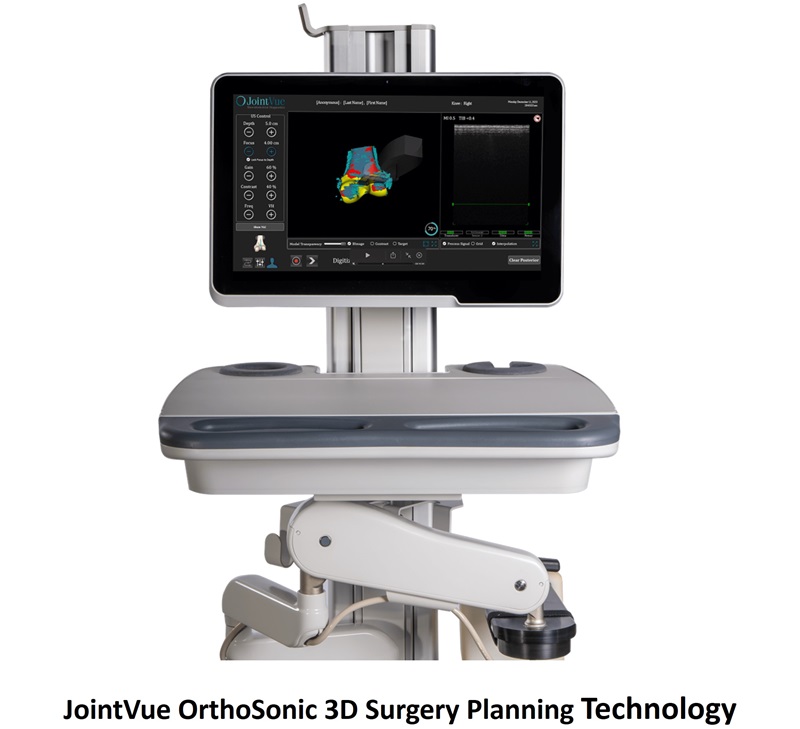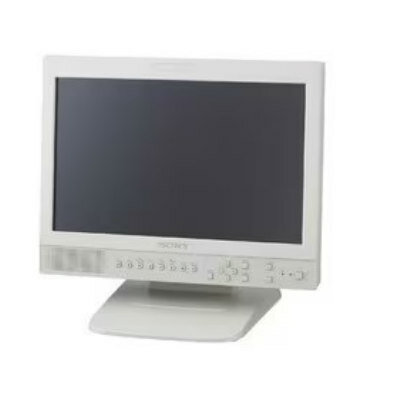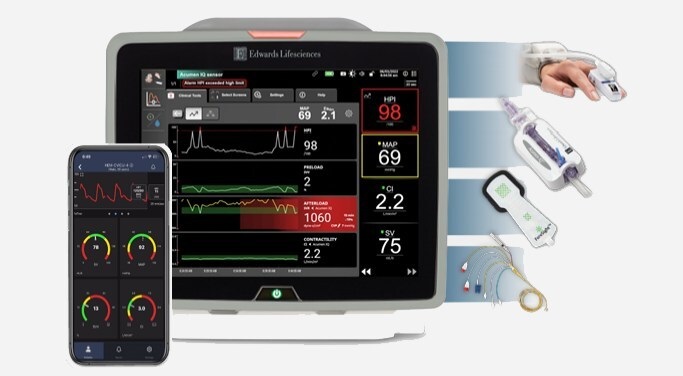Robotic Stapler Ensures More Consistent Placement
|
By HospiMedica International staff writers Posted on 17 Jul 2018 |

Image: The da Vinci SureForm 60 surgical stapler (Photo courtesy of Intuitive Surgical).
A new single-patient 60mm stapler designed for the da Vinci robotic surgical system offers 120 degrees of fully wristed articulation.
The Intuitive Surgical (Sunnyvale, CA, USA) SureForm 60 fully wristed, 60mm robotic stapler designed to guarantee a more consistent staple line in a wide variety of general surgical, thoracic, gynecologic, urologic, and pediatric indications, helping to prevent tissue damage over a range of tissue thicknesses. SureForm 60 is compatible with the da Vinci Xi and X surgical systems, and extends the da Vinci stapling portfolio so as to cover all required staple line lengths, which already includes 30 and 45mm EndoWrist staplers.
The 120 degrees cone of articulation provides the surgeon with precise positioning, gripping, clamping, and firing, all completely controlled through the da Vinci Surgeon Console. The SureForm 60 stapler also uses integrated SmartFire technology, a special software module that optimizes stapler, staple line, and tissue buttressing performance. SmartFire works by measuring tissue compression both before and during staple firing, with more than 1,000 measurements per second taken so as to fully automate the firing process.
“Intuitive continues our minimally invasive innovation with our 60mm stapler, rooted in extensive research and development and an understanding of surgeons’ needs,” said Sal Brogna, chief operating officer of Intuitive Surgical.
The da Vinci surgical systems consist of an ergonomic surgeon console or consoles, a patient-side cart with three or four interactive arms, high-performance vision system, and proprietary surgical endoscopic instruments that include rigid endoscopes, blunt and sharp endoscopic dissectors, scissors, scalpels, forceps, pick-ups, needle holders, and endoscopic retractors. Other accessories include devices for endoscopic tissue manipulation, including grasping, cutting, dissection, approximation, ligation, suturing, and delivery and placement of microwave and cryogenic ablation probes and accessories.
The Intuitive Surgical (Sunnyvale, CA, USA) SureForm 60 fully wristed, 60mm robotic stapler designed to guarantee a more consistent staple line in a wide variety of general surgical, thoracic, gynecologic, urologic, and pediatric indications, helping to prevent tissue damage over a range of tissue thicknesses. SureForm 60 is compatible with the da Vinci Xi and X surgical systems, and extends the da Vinci stapling portfolio so as to cover all required staple line lengths, which already includes 30 and 45mm EndoWrist staplers.
The 120 degrees cone of articulation provides the surgeon with precise positioning, gripping, clamping, and firing, all completely controlled through the da Vinci Surgeon Console. The SureForm 60 stapler also uses integrated SmartFire technology, a special software module that optimizes stapler, staple line, and tissue buttressing performance. SmartFire works by measuring tissue compression both before and during staple firing, with more than 1,000 measurements per second taken so as to fully automate the firing process.
“Intuitive continues our minimally invasive innovation with our 60mm stapler, rooted in extensive research and development and an understanding of surgeons’ needs,” said Sal Brogna, chief operating officer of Intuitive Surgical.
The da Vinci surgical systems consist of an ergonomic surgeon console or consoles, a patient-side cart with three or four interactive arms, high-performance vision system, and proprietary surgical endoscopic instruments that include rigid endoscopes, blunt and sharp endoscopic dissectors, scissors, scalpels, forceps, pick-ups, needle holders, and endoscopic retractors. Other accessories include devices for endoscopic tissue manipulation, including grasping, cutting, dissection, approximation, ligation, suturing, and delivery and placement of microwave and cryogenic ablation probes and accessories.
Latest Surgical Techniques News
- Microgrippers For Miniature Biopsies to Create New Cancer Diagnostic Screening Paradigm
- Miniature Soft Lithium-Ion Battery Could Be Used as Defibrillator During Surgery
- TAVI Procedure Supported by Radial Artery Access Reduces Bleeding Complications
- Portable Surgical Robot Seamlessly Integrates into Any OR for Performing Cholecystectomy Procedures
- New Thoracic Surgery Risk Calculators Support Preoperative Decision-Making
- Surgical Platform with Miniature Humanoid-Shaped Robotic Arms Provides Human Level Dexterity
- Precision Surgical Technique Enables Lymph Node Detection and Removal in Endometrial Cancer
- Glowing Approach Helps Surgeons Assess Neural Blood Flow in Chronic Nerve Compression Neuropathy
- Predictive Model Identifies Best Patients for Minimally Invasive Epilepsy Surgery
- Light-Driven Micro-Robot Designed to Swim Autonomously in Viscous Liquids Could Be Used for Unblocking Blood Vessels
- Novel Approach Combines Advanced Robotics and Low-Field MRI Technology for Incisionless Prostate Surgery
- Fast OCT System Integrated into Neurosurgical Microscope Identifies Tumor Margins During Brain Surgery
- Miniature Robots Transport Instruments for Endoscopic Microsurgery Through Body
- Robotic Visualization System for Neurosurgery Offers Greater Clarity for Complex Procedures
- Endometrial Ablation for Abnormal Uterine Bleeding Associated with High Risk of Hysterectomy
- Breakthrough Robot Technology Could Allow Entire Surgery to Be Performed Without Human Intervention
Channels
Critical Care
view channel_1.jpg)
Cutting-Edge Bioelectronic Device Offers Drug-Free Approach to Managing Bacterial Infections
Antibiotic-resistant infections pose an increasing threat to patient safety and healthcare systems worldwide. Recent estimates indicate that drug-resistant infections may rise by 70% by 2050, highlighting... Read more
Sophisticated Machine-Learning Approach Uses Patient EHRs to Predict Pneumonia Outcomes
Pneumonia, an infection that results in difficulty breathing due to fluid accumulation in the lungs, is one of the leading causes of death worldwide. This condition is particularly challenging to treat... Read more
Early TAVR Benefits Patients with Asymptomatic Severe Aortic Stenosis
For patients with asymptomatic severe aortic stenosis (AS) and preserved left-ventricular ejection fraction, current guidelines recommend clinical surveillance every six to twelve months.... Read more
First-Of-Its-Kind Experimental Therapy Enhances Tissue Repair After Heart Attack
Cardiovascular disease remains the leading cause of death worldwide, accounting for one-third of all annual fatalities. Following a heart attack, the heart's natural regenerative ability is limited, resulting... Read morePatient Care
view channel
Portable Biosensor Platform to Reduce Hospital-Acquired Infections
Approximately 4 million patients in the European Union acquire healthcare-associated infections (HAIs) or nosocomial infections each year, with around 37,000 deaths directly resulting from these infections,... Read moreFirst-Of-Its-Kind Portable Germicidal Light Technology Disinfects High-Touch Clinical Surfaces in Seconds
Reducing healthcare-acquired infections (HAIs) remains a pressing issue within global healthcare systems. In the United States alone, 1.7 million patients contract HAIs annually, leading to approximately... Read more
Surgical Capacity Optimization Solution Helps Hospitals Boost OR Utilization
An innovative solution has the capability to transform surgical capacity utilization by targeting the root cause of surgical block time inefficiencies. Fujitsu Limited’s (Tokyo, Japan) Surgical Capacity... Read more
Game-Changing Innovation in Surgical Instrument Sterilization Significantly Improves OR Throughput
A groundbreaking innovation enables hospitals to significantly improve instrument processing time and throughput in operating rooms (ORs) and sterile processing departments. Turbett Surgical, Inc.... Read moreHealth IT
view channel
Machine Learning Model Improves Mortality Risk Prediction for Cardiac Surgery Patients
Machine learning algorithms have been deployed to create predictive models in various medical fields, with some demonstrating improved outcomes compared to their standard-of-care counterparts.... Read more
Strategic Collaboration to Develop and Integrate Generative AI into Healthcare
Top industry experts have underscored the immediate requirement for healthcare systems and hospitals to respond to severe cost and margin pressures. Close to half of U.S. hospitals ended 2022 in the red... Read more
AI-Enabled Operating Rooms Solution Helps Hospitals Maximize Utilization and Unlock Capacity
For healthcare organizations, optimizing operating room (OR) utilization during prime time hours is a complex challenge. Surgeons and clinics face difficulties in finding available slots for booking cases,... Read more
AI Predicts Pancreatic Cancer Three Years before Diagnosis from Patients’ Medical Records
Screening for common cancers like breast, cervix, and prostate cancer relies on relatively simple and highly effective techniques, such as mammograms, Pap smears, and blood tests. These methods have revolutionized... Read morePoint of Care
view channel
Handheld, Sound-Based Diagnostic System Delivers Bedside Blood Test Results in An Hour
Patients who go to a doctor for a blood test often have to contend with a needle and syringe, followed by a long wait—sometimes hours or even days—for lab results. Scientists have been working hard to... Read more
Smartphone-Enabled, Paper-Based Quantitative Diagnostic Platform Transforms POC Testing
Point-of-care diagnostics are crucial for public health, offering rapid, on-site testing that enables prompt diagnosis and treatment. This is especially valuable in remote or underserved regions where... Read moreBusiness
view channel
Hologic Acquires Gynesonics to Strengthen Existing Gynecological Surgical Business
Hologic (Marlborough, MA, USA) has signed a definitive agreement to acquire Gynesonics (Redwood City, CA, USA) for approximately USD 350 million, subject to working capital and other customary closing adjustments.... Read more















